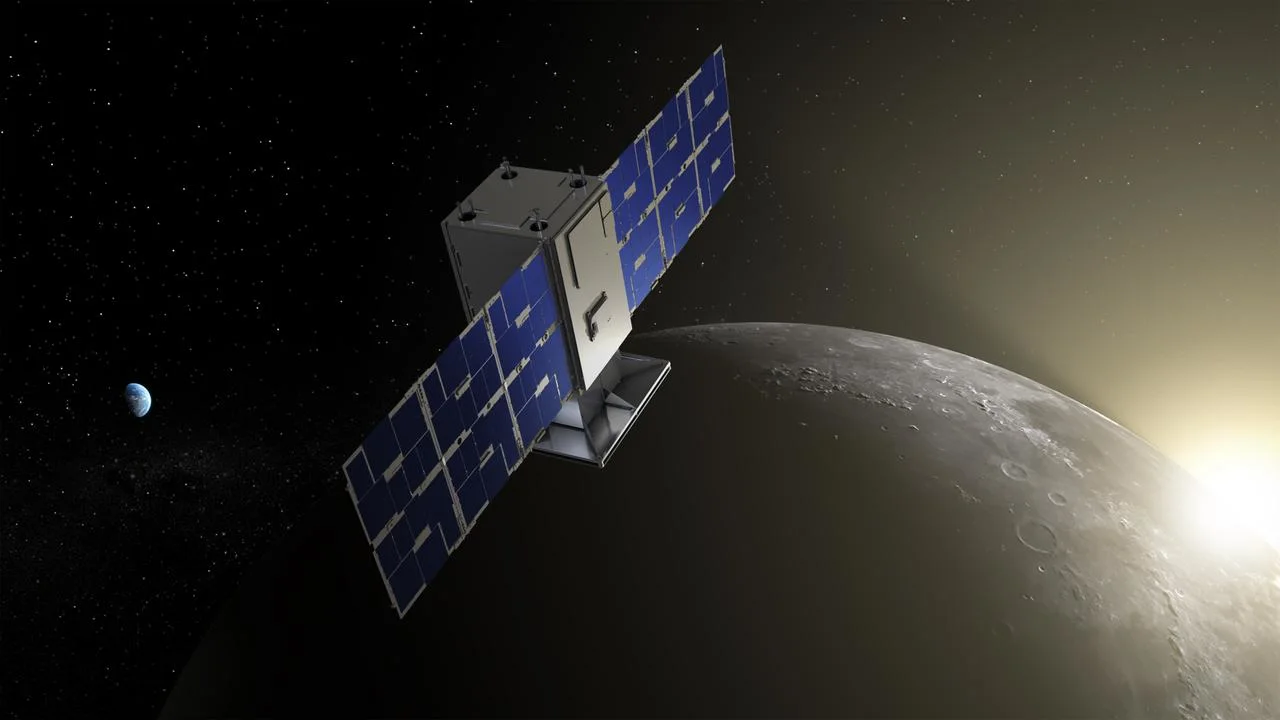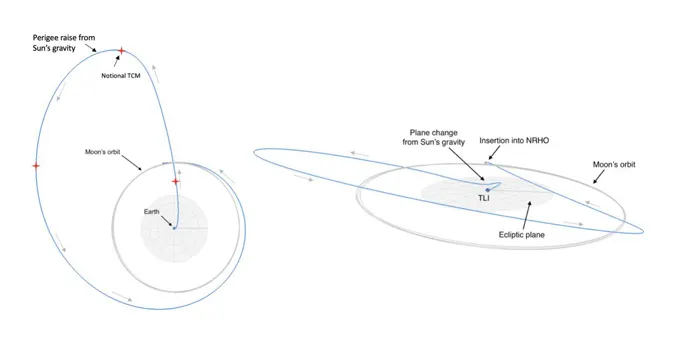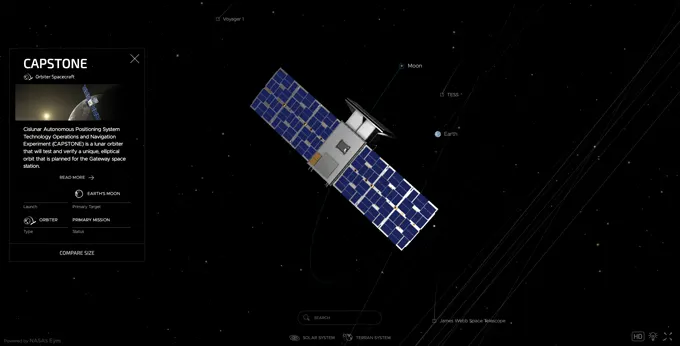
NASA launches tiny CAPSTONE to blaze a unique new 'trail' around the Moon
This new cubesat is prepping the way for the future lunar missions.
NASA launched a tiny satellite into space early Tuesday morning on a mission to test out a never-before-attempted orbit around the Moon.
Just before 6 a.m. EDT, on June 28, 2022, an Electron rocket lifted off from Rocket Lab Launch Complex 1 on the Mahia Peninsula of New Zealand. Perched atop the booster was NASA's new Cislunar Autonomous Positioning System Technology Operations and Navigation Experiment, also known as CAPSTONE.
"CAPSTONE is a pathfinder in many ways, and it will demonstrate several technology capabilities during its mission timeframe while navigating a never-before-flown orbit around the Moon," CAPSTONE project manager Elwood Agasid said in a NASA press release. "CAPSTONE is laying a foundation for Artemis, Gateway, and commercial support for future lunar operations."

The CAPSTONE mission launched from Rocket Lab Launch Complex 1 at 9:55 p.m. New Zealand Standard Time (5:55 a.m. EDT), Tuesday, June 28, 2022. Credit: NASA TV
CAPSTONE is a 'cubesat' satellite, roughly the size of a small microwave oven (not counting its two solar panels). Now in space, CAPSTONE will be taking a very long, very unusual, but highly efficient path to reach the Moon.
The spacecraft will follow a 'ballistic lunar transfer' using the combined gravity of Earth, the Moon, and the Sun. Essentially, it will 'surf' on the gravitational contours produced by the three celestial objects, travelling out to more than 4 times the distance to the Moon (over 1.5 million km) before turning back.
Past missions to the Moon have taken days, or maybe weeks, to reach their destination. However, CAPSTONE's trajectory will bring it back for a lunar intercept roughly four months from now!
Read More: New robotic arm among Canada's plans for future lunar missions

This graphic shows the unorthodox but highly efficient path CAPSTONE is using to reach the Moon. Credit: Advanced Space
This trajectory, developed by commercial space company Advanced Space, is just the first part of the CAPSTONE mission's unusual path through space. Once the cubesat catches up to the Moon, it will fire its thrusters to enter an elongated polar orbit known as the near rectilinear halo orbit, or NRHO. From here, we will see the spacecraft on a repeating elliptical loop that takes it from 70,000 km from the lunar south pole to just 1,600 km above the Moon's north pole and then back out again.
However, as shown in the illustrations below, tracing CAPSTONE as it tags along with the Moon reveals the unique 'crown-shaped' pattern of the NRHO that the spacecraft will be tracing around Earth.

This composite of three screen captures from a NASA video show CAPSTONE near the Moon (top left), the spacecraft's elongated lunar polar orbit (top right) and the crown-shaped path it takes around the Earth (bottom). Credit: NASA's Ames Research Center
According to NASA: "The destination for CAPSTONE is a unique lunar orbit intended for NASA's Gateway, a multipurpose outpost that will provide essential support for long-term astronaut lunar missions as part of the Artemis program. This special orbit, called a near rectilinear halo orbit, or NRHO, enables stability that translates to energy efficiency for Gateway's minimum 15-year lifespan orbiting the Moon. CAPSTONE will be the first spacecraft to test the dynamics of NRHO once it arrives at the Moon following a four-month transit period. And while this gravity-driven track takes longer to reach the Moon, it will dramatically reduce the amount of fuel this pathfinder CubeSat will need to fly there."

The Eyes on the Solar System interactive real-time 3D data visualization zooms in on the CAPSTONE spacecraft. NASA says the public should be able to follow along with CAPSTONE on this simulator, starting roughly one week after launch. Credit: NASA
Once CAPSTONE arrives at the Moon, this unique lunar orbit isn't the only thing it will be testing. It will also use a new navigation system, the Cislunar Autonomous Positioning System (CAPS), developed by Advanced Space.
WATCH: KIM AND SCOTT DISCUSS CAPSTONE'S 'PATHFINDER' MISSION IN THE LATEST EPISODE OF OUT OF THIS WORLD
Many spacecraft still contact Earth directly via NASA's Deep Space Network (DSN) to receive updates on their position and trajectory. As a result, mission controllers must accommodate these updates, reducing the time the DSN has for collecting science data from space missions.
However, CAPS will allow CAPSTONE to navigate by communicating directly with NASA's Lunar Reconnaissance Orbiter, which orbits the Moon at an average distance of 50 kilometres. If CAPS is successful, more spacecraft could be equipped with this system, freeing up valuable time on the Deep Space Network for more science.
"CAPSTONE is an example of how working with commercial partners is key for NASA's ambitious plans to explore the Moon and beyond," Jim Reuter, associate administrator for NASA's Space Technology Mission Directorate, said in Tuesday's press release. "We're thrilled with a successful start to the mission and looking forward to what CAPSTONE will do once it arrives at the Moon."
(Thumbnail image courtesy NASA's Ames Research Center/Daniel J. Rutter)
